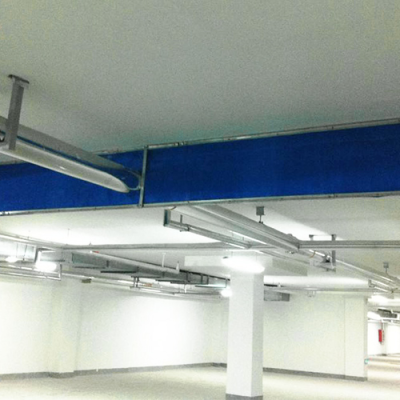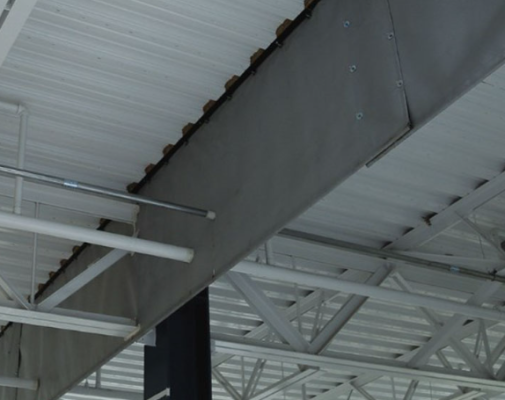What is a Smoke Barrier? What Are Its Functions?

What is a Smoke Barrier?
A smoke barrier is a crucial structural element used in buildings to prevent the spread of smoke during a fire. Typically suspended, hung, or supported from the ceiling or roof, smoke barriers isolate smoke within a designated area, providing occupants with sufficient time to escape safely.
Smoke barriers can be constructed from various materials, including fire-resistant latex paint, rock wool panels, and fiberglass panels. They can be installed at any height, and their dimensions can be adjusted based on the size and shape of the building.
Functions of a Smoke Barrier
Smoke barriers are essential components of fire protection systems in buildings, playing several critical roles during a fire incident:
2.1 Preventing Smoke Spread

Guangdun Smoke Barriers are designed to contain and prevent the spread of smoke in the event of a fire, helping to protect building occupants and improve fire safety. These barriers effectively compartmentalize spaces to reduce smoke damage and ensure safe evacuation routes.
Key Features:
Smoke Containment: Prevents smoke from spreading to other areas, improving safety during emergencies.
Durable Construction: Made from high-quality materials to withstand extreme conditions.
Easy Deployment: Designed for quick installation and simple operation during emergencies.
Fire Resistance: Offers additional protection against the spread of fire.
Compliance: Meets fire safety standards and building regulations for smoke control.
Guangdun Smoke Barriers play a critical role in maintaining safe evacuation paths and reducing fire-related damage in commercial and industrial buildings.
In the event of a fire, flames produce significant amounts of smoke and toxic gases. Smoke barriers effectively contain this smoke within the affected area, thereby reducing the health risks associated with smoke inhalation. The material used in smoke barriers greatly influences their efficacy, and their performance can vary under different fire conditions.
2.2 Increasing Escape Time
When a fire occurs, smoke barriers isolate smoke, diminishing its harmful effects on individuals and thereby extending the time available for escape. In complex emergency environments, smoke barriers can provide directional guidance, enabling people to exit the premises quickly and safely.
2.3 Preventing Fire Spread
Smoke barriers can also hinder the spread of flames, giving firefighters additional time to extinguish the fire or conduct rescue operations. This feature is vital in ensuring the safety of both occupants and emergency personnel.
2.4 Enhancing Building Safety
The incorporation of smoke barriers significantly enhances the overall safety of a building, minimizing fire damage. The fire resistance capabilities of smoke barriers are critical to a building’s safety; therefore, careful consideration should be given to their design and installation during the construction process.
Conclusion
Smoke barriers play a vital role in enhancing building safety by containing smoke, increasing escape time, preventing fire spread, and improving overall structural integrity. To bolster fire safety in buildings, it is essential to focus on the design, material selection, and installation of smoke barriers. Learning from historical fire incidents can inform better design practices and maintenance strategies.
As a leading fire door manufacturer, we understand the importance of comprehensive fire safety measures, including the effective implementation of smoke barriers. By integrating smoke barriers with high-quality fire doors, we can significantly improve the safety and security of buildings.


